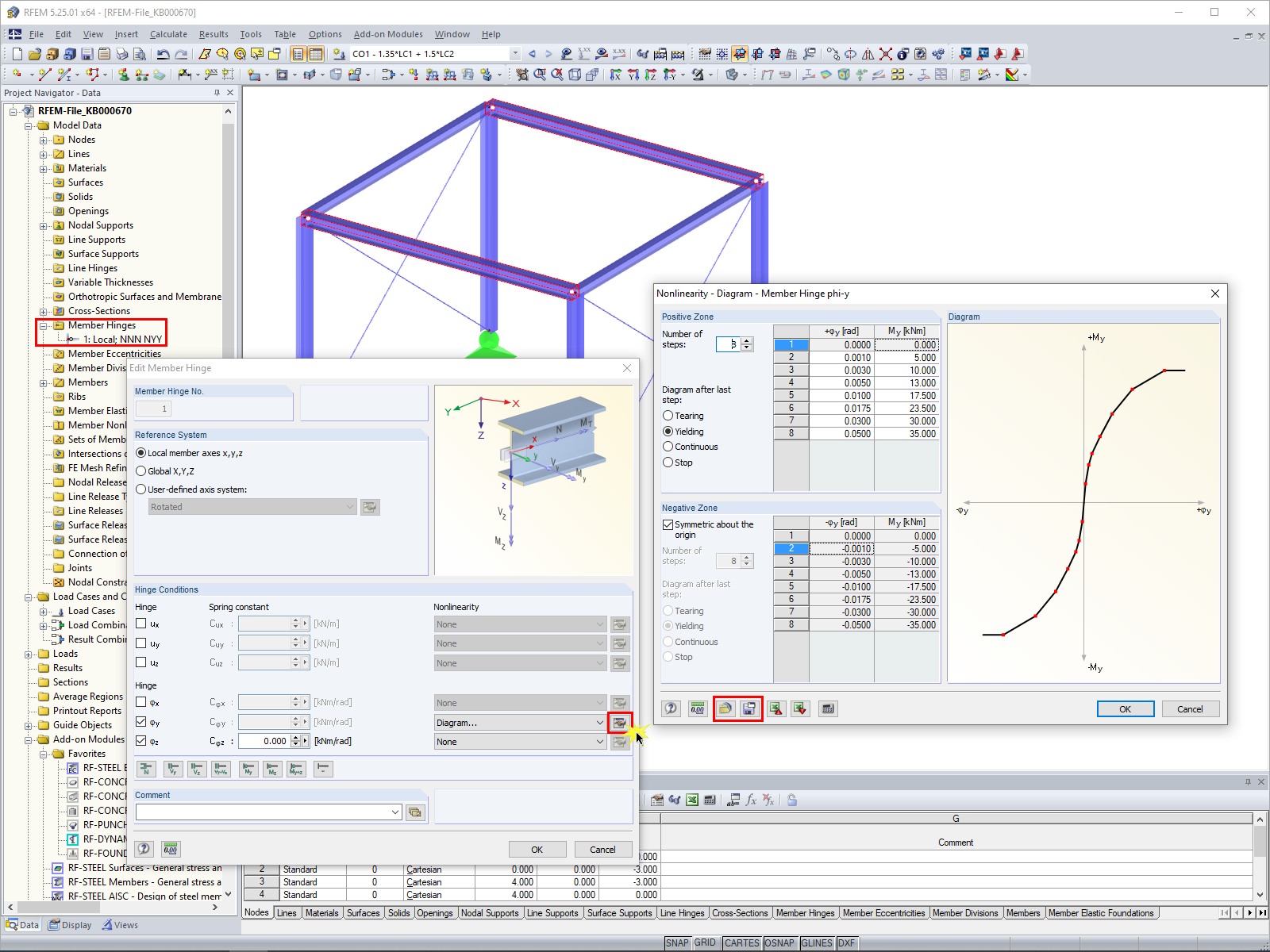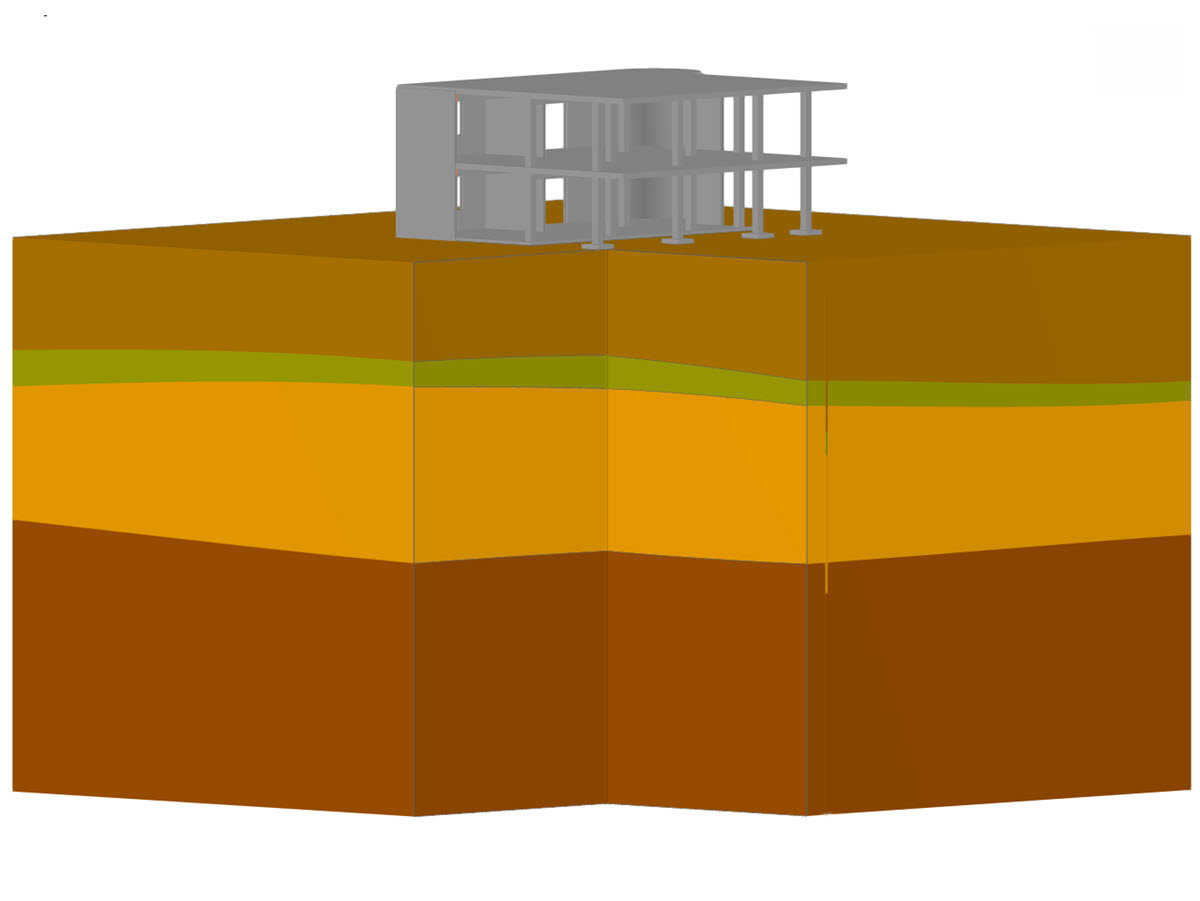Question:
When displaying the result diagrams on a member (the "rib" type), there is the option to display the internal force V-L. What is this value and how is it calculated?
Answer:
The force V-L is the longitudinal shear force between the top surface and the member. It is calculated as an integrated shear flow between the plate and the member at a particular point on the member.
For the simplified example provided here, the resulting cross-section values for the integration width of 10 cm are as follows:
$I_y=\frac{b\times h^3}{12}=\frac{10 cm\times20 cm^3}{12}=6,666.67 cm^4$
$S_y=h_1\times b\times((h-e_z)-\frac{h_2}2)=10 cm\times10 cm\times((20 cm-10 cm)-\frac{10 cm}2)=500 cm^3$
$\tau=V_L=\frac{V_z\times S_y}{I_y\times b}=\frac{5.53 kN\times500 cm^3}{6,666.67 cm^4}=0.415 kN/cm=41.5 kN/m$
The integration width has been set to the total of 10 cm.
where
I-y is the second moment of area,
S-y is the static moment,
h-1 is the height of the upper cross-section part,
h-2 is the height of the lower cross-section part,
e-z is the centroidal distance,
h is the total height.
The values can be adjusted for a T-beam.









































![Visualization of Haixi Solar Power Plant, China
(© Cockerill Maintenance & Ingenierie s.a. [CMI])](/en/webimage/019788/2952722/Sonnekraftwerk1.jpg?mw=350&hash=7e081df07564a2c98a32b94a13c44a1ce7678610)






























.png?mw=600&hash=49b6a289915d28aa461360f7308b092631b1446e)





